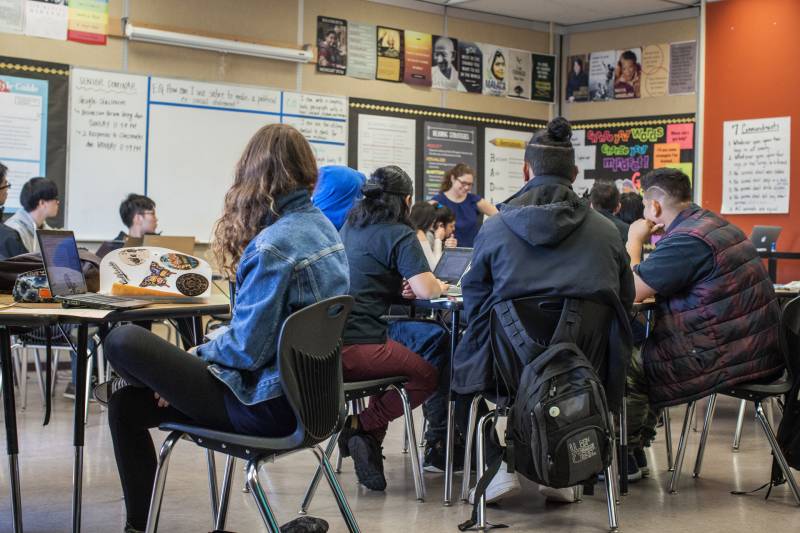“Teenagers are much more likely to listen to someone at school than a lecture from Mom or Dad,” he said. “Our hope is that this encourages that peer-to-peer advocacy and support and it will have wide-reaching effects.”
Even before the pandemic, young people were facing myriad mental health challenges, fueled in part by social media, racial inequity and growing social and political discord.
In 2019, a third of U.S. high school students reported persistent feelings of sadness or hopelessness, according to the U.S. Centers for Disease Control and Prevention. After nearly two years of a pandemic, those feelings have dramatically intensified for many students, especially those who have felt isolated or struggled with distance learning, medical conditions or economic hardship.
Alvin Lee, the executive director of Generation Up, a California youth advocacy group that strongly supported the new law, said education is a good way to help students cope with their own emotional struggles, while also learning how best to support their friends.
“Mental health is one of the biggest conversations happening right now,” said Lee, a first-year student at Claremont McKenna College. “The research is pretty clear. The more mental health education early on, the better the outcomes later. … Our hope is that this prepares the next generation of students to talk about and deal with mental health issues, their own as well as others’.”
Last month, U.S. Surgeon General Vivek Murthy issued a stark warning about the mental health of young people, urging schools, health care companies and other institutions to do a better job supporting young people’s emotional health and self-esteem.
In the report, Murthy recommended that young people have increased access to high-quality counseling and physical care and learn techniques for managing stress and emotional changes, while also limiting their social media and video game exposure.
Increased support for kids in families struggling with poverty and other inequities is also key, he added.
“Mental health challenges in children, adolescents, and young adults are real, and they are widespread,” Murthy wrote in the report. “But most importantly, they are treatable, and often preventable. … Our obligation to act is not just medical — it’s moral.”
The California Association for Health, Physical Education,
Recreation and Dance strongly supported SB 224, noting that even though mental health is included in existing curriculum, the way it's taught is not consistent across school districts and teachers often are not adequately prepared to cover it.
Hopefully, this bill will help fix that, said William Potter, the group’s president.
“Many [of our] members instruct mental health topics in schools, and we know how important this education is for young people. It can literally save lives,” he said. “However … many school districts do not have qualified health teachers who are trained to teach this content and it would be great to see that change.”
Jessica Cruz, executive director of the California chapter of the National Alliance on Mental Illness, said the new law is a good start in reducing the stigma of mental illness and encouraging students, teachers and families to talk about the issue.
“We’re happy this isn’t one-and-done,” she said. “We wanted to make sure it’s robust, ingrained in the curriculum and cumulative over time, so students really get a chance to understand and identify mental health disorders and know how to access resources.”
Ideally, she said, it’s the beginning of more comprehensive and substantial mental health education in schools, beginning in kindergarten.
“My hope is that eventually this curriculum will get into every school in California and the nation,” she said. “It’s not just for the benefit of students, but their families and teachers, too. It’s for the entire community.”
This story was originally published by EdSource.

